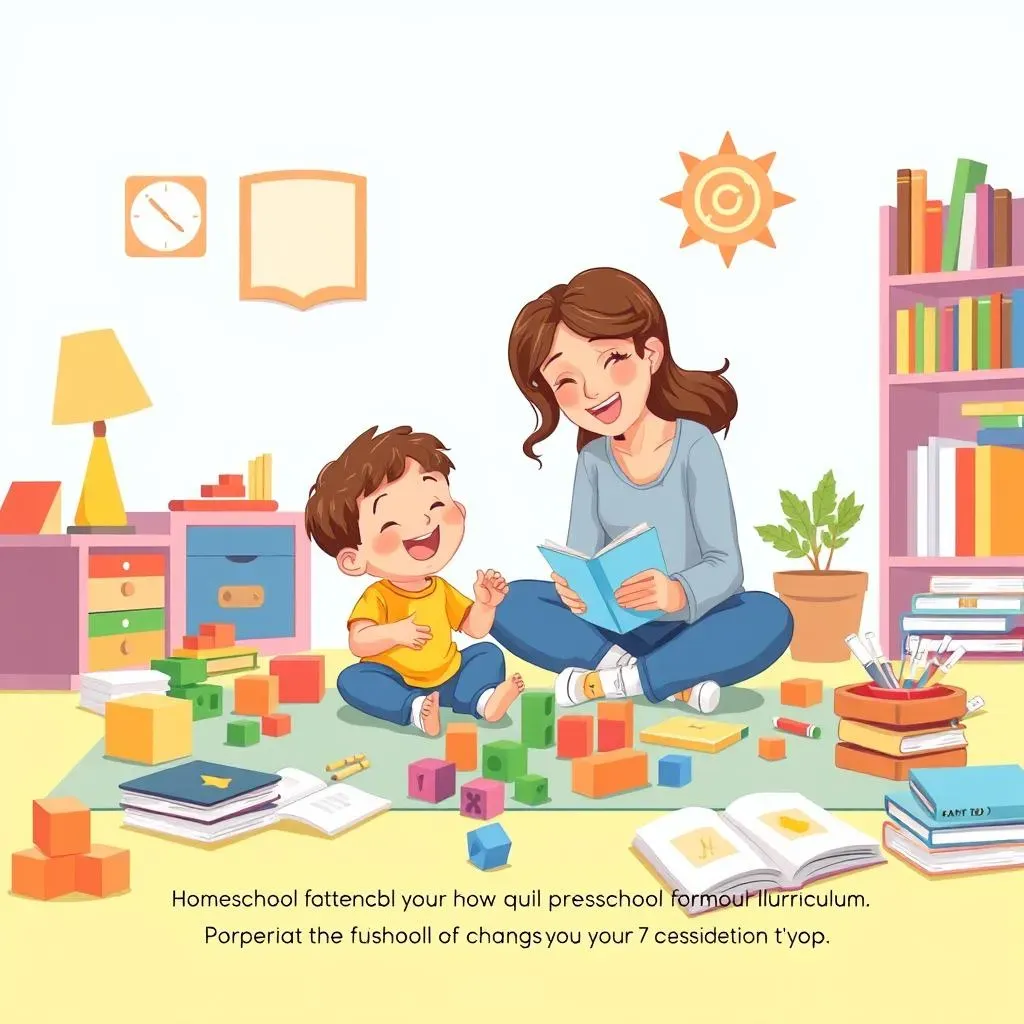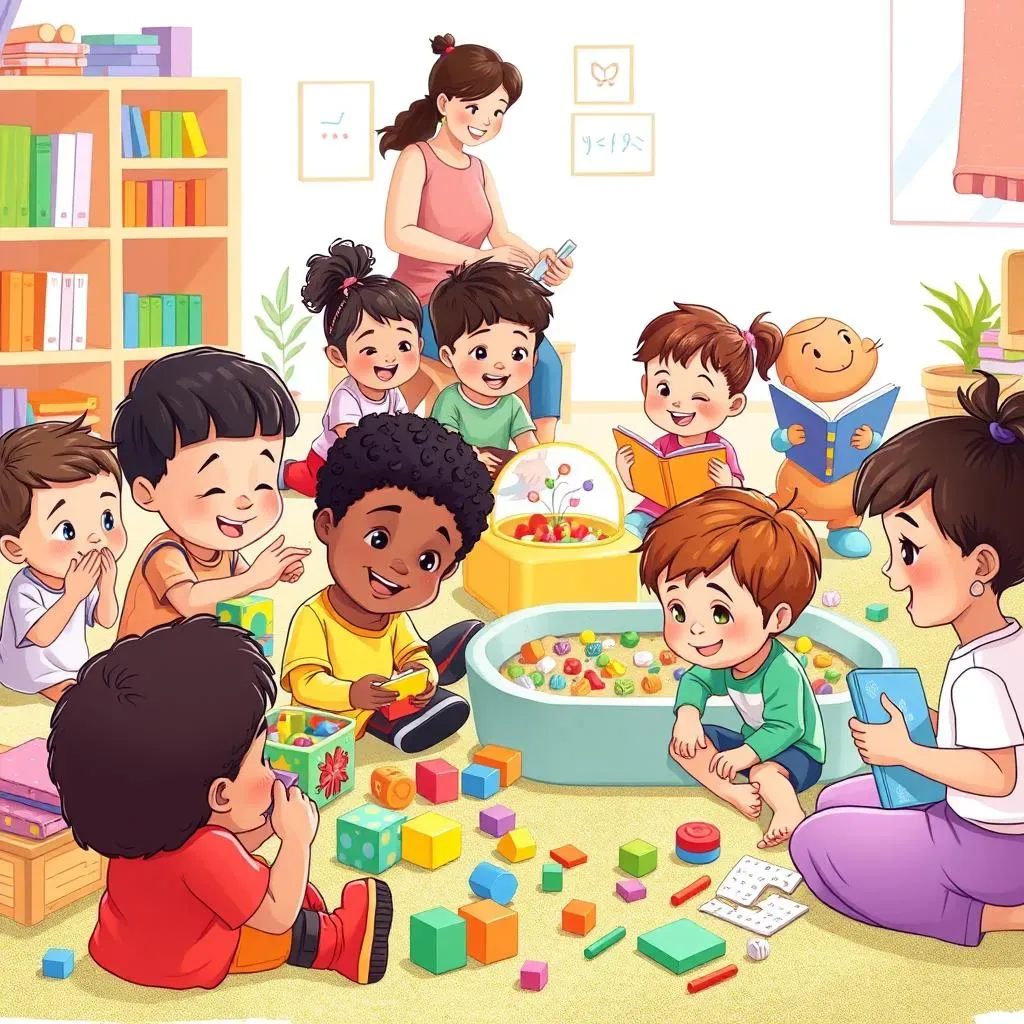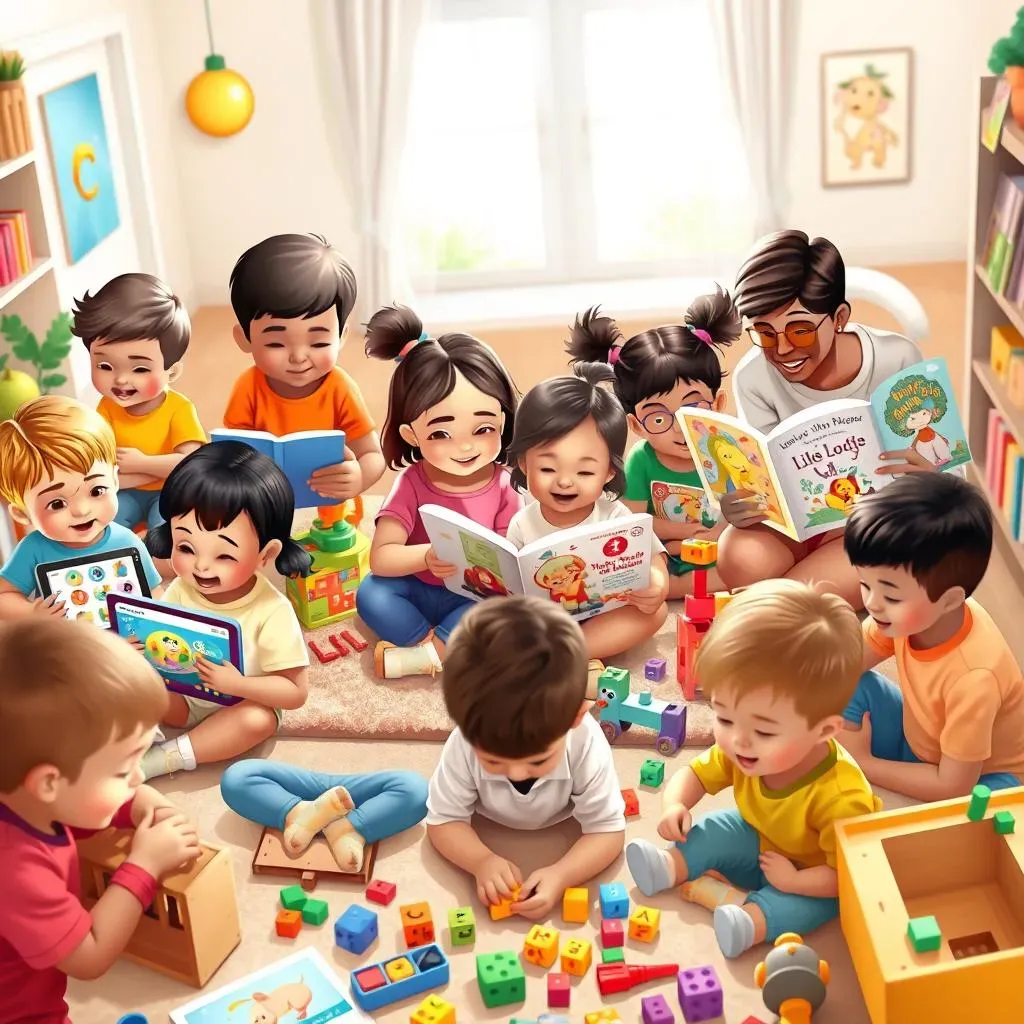Table of Contents
Thinking about homeschooling your preschooler? It can feel like a big step, but it's also an amazing chance to shape your child's early learning journey. Choosing the right homeschooling preschool curriculum is key to making it a success. This isn't about recreating a classroom at home; it's about crafting a learning space that fits your child's unique way of exploring the world. We'll look at why a structured curriculum can help, even for the littlest learners. We'll also cover the things to consider when picking a program, from hands-on activities to play-based learning. I'll show you some of the most popular choices out there, from the well-known names to the hidden gems, and give you some tips on how to make it all work for your child. Whether you are drawn to the structure of a Montessori approach or the free play of a themed curriculum, this guide will help you find a path that makes learning fun and engaging for both you and your child.
Why Use a Homeschool Preschool Curriculum?
Why Use a Homeschool Preschool Curriculum?
A Foundation for Learning
so you're thinking about skipping the traditional preschool route? That's cool, but where do you start? A homeschooling preschool curriculum isn't about turning your living room into a mini school. Instead, it's more like having a roadmap for your child's early learning. It gives you some structure, making sure you're hitting those key developmental milestones. Think of it as a guide, not a rigid set of rules. It helps you cover things like basic literacy, number skills, and fine motor development, so your little one is ready for kindergarten and beyond.
Without a curriculum, it's easy to get lost in the day-to-day. You might end up focusing too much on one area and missing out on others. A curriculum helps you to be more intentional about what your child is learning, and how they are learning it. It’s not just about academics either; it's about helping them develop their social and emotional skills too.
Structure Meets Flexibility
Now, I know what you might be thinking: "Structure? That sounds boring!" But here's the thing, a curriculum doesn't have to mean rigid, timed lessons. A good curriculum provides a framework, but it also allows for flexibility. It's about having a plan, but being ready to go with the flow based on your child's mood and interests. One day we might spend hours playing with blocks and the next we might be painting. The curriculum is the backbone that keeps us moving forward in a balanced way.
It's also easier to track progress with a curriculum. You can see what your child has mastered and where they might need a bit more support. It's a great way to feel confident you're giving your child a solid start to their education.
Benefit | Description |
|---|---|
Clear Path | Provides a roadmap for learning, ensuring key areas are covered. |
Balanced Approach | Helps balance academic, social, and emotional development. |
Flexibility | Allows for adapting to your child's interests and pace. |
Progress Tracking | Makes it easier to see what your child has learned and where they need help. |
A Launchpad for Future Learning
Ultimately, a homeschooling preschool curriculum is about setting your child up for success in the long run. It's not about pushing them to be little geniuses, it's about sparking a love of learning. When you use a thoughtful curriculum, you're helping your child develop important skills like problem-solving and critical thinking. It also gives them a chance to explore their interests and discover what they are passionate about. For example, if your child loves dinosaurs, you can tailor the curriculum to include more dino-themed activities and books.
It's about creating a positive and enriching experience that makes learning fun and exciting. It's about laying a strong foundation so when they do go to school, they're confident and ready to take on the world. So, even if you are just starting to think about it, it's worth exploring what kind of curriculum could work for your family and your child.
Choosing the Right Homeschool Preschool Curriculum
Choosing the Right Homeschool Preschool Curriculum
Know Your Child
so you're ready to find a homeschooling preschool curriculum? That's great! But hold up a sec. Before you get lost in all the options, take a good look at your kiddo. What makes them tick? Are they super active, always on the move? Or are they more into quiet activities, like puzzles and books? Some kids thrive with lots of hands-on stuff, while others might do better with a more structured approach. It's like finding the right pair of shoes – what works for one person, might not be the best fit for another. Knowing your child's learning style and personality is half the battle.
My little one, for example, is all about jumping and running. Sitting still for too long is a no-go for us. So, I knew a curriculum that was all worksheets and no action wouldn't work. We need something that lets her move and explore. Every child is different. What works for your neighbor's kid might not work for yours and that is perfectly okay.
Consider Your Family's Lifestyle
Now, it's not just about your child, it's also about your family. What's your daily routine like? Do you have a lot of time to dedicate to homeschooling, or do you need something that's more flexible and can fit into a busy schedule? Some curriculums need a lot of parent involvement, while others let your child be more independent. Also, think about your budget. Some programs are free, while others can cost a bit. It's about finding something that fits your family's needs, not just what's popular.
For us, we needed something that I could implement while also working from home. So, I looked for a curriculum that had short lessons and lots of independent activities. It made my life so much easier and also kept my kiddo engaged. It's about making homeschooling work for your family, not the other way around.
Factor | Questions to Ask |
|---|---|
Child's Learning Style | Is your child active or quiet? Do they prefer hands-on or structured learning? |
Family Schedule | How much time can you dedicate to homeschooling each day? Do you need flexibility? |
Budget | What is your budget for a curriculum? Are you looking for free or paid options? |
Hands-on vs. Screen Time
Another thing to consider is how much screen time you are okay with. Some curriculums are all about worksheets and videos. Others are more focused on play and hands-on learning. I'm personally a big fan of keeping the screen time to a minimum, especially for preschoolers. They learn so much by touching, feeling, and exploring the world around them. Think about what fits your family's values and what you want your child's early learning experience to look like. It's your choice, and it's a big one.
When I was looking, I made sure to find a curriculum that had lots of activities that we could do together, like crafts, games, and outdoor exploration. I think it makes learning more fun and helps to create a real connection between us. Remember, choosing the right curriculum is a journey, not a race. It's all about finding what fits best for your family, and it's perfectly okay to try different things until you find the perfect fit.
Top Homeschool Preschool Curriculum Options
Top Homeschool Preschool Curriculum Options
Exploring the Variety
Alright, let's get to the good stuff! You've thought about your kid and your family, now it's time to look at some actual homeschooling preschool curriculum options. There are tons out there, each with its own unique approach. It can feel a bit overwhelming, like walking into a giant toy store with no idea what to pick. But don't stress, we can break it down. Some programs are all about academics, while others focus on play. Some are super structured, and others are more go-with-the-flow. I'll walk you through a few of the most talked-about ones, so you can get a feel for what's out there. It's like finding the right recipe, you have to try different things until you find what tastes good to you.
We have options like Time4Learning, which is a popular online program, or The Good and the Beautiful, which is known for its beautiful, literature-based approach. Then, there are programs like Hooked on Phonics, which is great for early literacy, and others, like Sonlight, that focus on reading and storytelling. It's not about finding the "best" one, it's about finding the one that matches your family and your child's learning needs. Remember, you are the best teacher for your child, and the curriculum is a tool to help you along the way.
Curriculum | Focus |
|---|---|
Time4Learning | Online, comprehensive curriculum |
The Good and the Beautiful | Literature-based, emphasis on beauty |
Hooked on Phonics | Early literacy focused |
Sonlight | Reading and storytelling focus |
Play-Based and Montessori Approaches
Now, let’s talk about play! Some curriculums are all about learning through play, which is fantastic for preschoolers. Programs like "Playing Preschool" and "The Homegrown Preschooler" are great examples of this. They focus on hands-on activities, games, and explorations. It's not just about having fun, though, it's about learning while having fun. It's about using their natural curiosity to learn about the world around them. Play-based learning is my personal favorite, because it feels like a natural way to teach young kids. I've seen my little one learn so much just by playing.
Then there's the Montessori method. It's all about child-led learning, where kids explore at their own pace. Curriculums like "Child of the Redwoods" and NAMC (North American Montessori Center) offer a Montessori approach. They use specific materials designed to teach concepts in a hands-on, concrete way. It's about letting kids discover things for themselves. It's a different approach than a traditional curriculum, but it can be very effective for kids who are independent learners. It's like giving them the keys to their own learning journey. Both play-based and Montessori approaches are good options to consider if you want to let your child explore and learn at their own pace.
Making Homeschool Preschool Work for Your Child
Making Homeschool Preschool Work for Your Child
Embrace the Chaos
so you've picked a homeschooling preschool curriculum, now what? Time to get real. Homeschooling with little ones isn't always sunshine and rainbows. It’s messy, it's loud, and sometimes it feels like you're herding cats. My advice? Just go with it. Don’t try to make everything perfect. Some days, you'll stick to the plan like glue; other days, you'll be lucky if you get through one activity before your kiddo is off building a fort in the living room. And you know what? That's totally fine. The goal is to create a positive learning environment, not to win a teacher-of-the-year award. Remember, a little bit of chaos is part of the fun.
When we started, I had visions of perfectly organized lessons and a super-engaged child. Reality hit hard. Some days, my little one wanted nothing to do with the curriculum. Instead, she wanted to play with her blocks or read the same book for the tenth time. So, I learned to be flexible, to follow her lead, and to incorporate her interests into the day. It made homeschooling so much more enjoyable for both of us. It’s about being adaptable, not rigid.
Challenge | Solution |
|---|---|
Unpredictable Child Behavior | Be flexible, follow their lead, and incorporate their interests. |
Feeling Overwhelmed | Take breaks, don't try to do too much, and ask for help when needed. |
Lack of Structure | Create a simple routine, but be prepared to adjust it as needed. |
Keep it Fun and Engaging
The key to making homeschooling preschool work is to make learning fun. It’s not about sitting at a desk for hours; it’s about exploring, discovering, and playing. Think of your home as a learning lab. Use everyday objects to teach concepts. Turn counting into a game with toys, or make reading more exciting by acting out the stories. Get outside, explore nature, and make learning an adventure. If your child is engaged, they're more likely to learn and retain information. It's not about making it feel like school, it's about making it feel like fun.
I found that my little one loves anything that involves her hands. So, we do a lot of art projects, sensory bins, and building activities. We also go on nature walks and collect leaves and rocks. I try to tie these activities into our curriculum, but sometimes we just do them for fun. It's about finding that balance between learning and play. Remember, it's a journey, not a destination. So, take a deep breath and enjoy the ride!
Wrapping Up Your Homeschool Preschool Journey
Finding the perfect homeschooling preschool curriculum is a bit like finding the right pair of shoes; what works wonders for one kid might not fit another. The key is to stay flexible, observe your child's reactions, and don't be afraid to tweak things as you go. It's not about following a rigid plan to the letter, but about creating an environment where curiosity thrives and learning feels like a grand adventure. Whether you end up with a structured program or a more relaxed, play-based approach, the most important thing is that you are present, engaged, and having fun with your little one. Remember, this is your journey, and the best curriculum is the one that sparks joy for both of you.